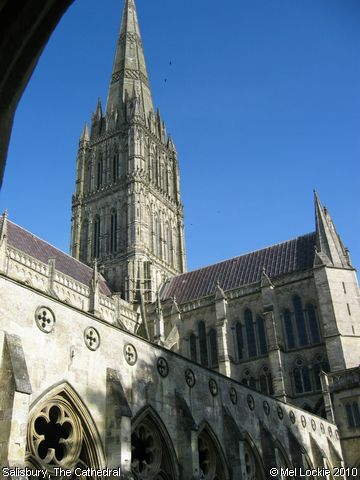The Cathedral, Salisbury
The foundations of the town of Salisbury lie back in the Iron Age, with a camp on a hill a few miles from Stonehenge. When the Romans came, they expanded it, and called it Serviodunum. The Normans then built a castle, and a cathedral on the site, and it became Sarum. By the early 13th century, the Bishop Herbert Poore, concluded the fortified site wasn't big enough for both castle and church, and decided to build a new cathedral to the south. He died before he could carry out his plan, but the project was continued by his brother Richard, who replaced him as Bishop. The work was begun in 1220 and the main part of the building was completed in the relatively short time of 38 years. The tower and spire were added in 1334, and their combined height of 404ft makes it the tallest in England. About 1687, Sir Christopher Wren discovered the spire was leaning almost 30 inches off centre, and his solution was to straighten it with iron tie-rods. Fifty years later (1737), a brass plate was set in the floor marking the centre point. When the tie rods were replaced in 1951, it was discovered the spire had moved no further. However, given that the whole building rests on foundations less than 2 metres down, and in swampy ground, the fact that the building is still standing at all seems nothing short of a miracle! In more recent years, extensive remedial work has been undertaken in shoring these foundations, ensuring its future, for perhaps another 800 years...? (Information provided by Rosemary Lockie) Reference
Image contributed by Mel Lockie on 1st February 2010.
|
||
